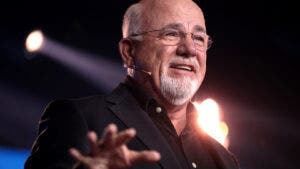Nvidia, Microsoft, and Apple Could Help This Stock-Split ETF Turn $400 per Month Into $1 Million

Wall Street analysts predict artificial intelligence (AI) will create trillions of dollars in economic value over the next decade. It has already started, with Nvidia‘s market capitalization surging by a whopping $2.1 trillion since the start of 2023 as developers race to buy the company’s AI data center chips.
But previous technological revolutions like the internet, cloud computing, and enterprise software have taught us that picking the long-term winners and losers in the AI race won’t be easy. Nvidia faces growing competition already, and in the software space, some of the best AI models are coming from privately held start-ups.
Taking a broad approach to AI investing might be the best solution for most investors. Buying an exchange-traded fund (ETF) is a simple way to do that, and the iShares Expanded Tech Sector ETF (NYSEMKT: IGM) holds almost every popular AI stock right now.

The iShares Expanded Tech Sector ETF just completed a stock split
The iShares ETF delivered a compound annual return of 20.2% over the last 10 years, handily beating the 13.2% average annual gain in the S&P 500 index over the same period.
The ETF was trading as high as $512 per share in March, which made it somewhat expensive for investors with small portfolios. To make it more accessible, iShares conducted a 6-for-1 stock split that increased the number of shares in circulation sixfold, and reduced the price per share by a proportional amount. Now, investors can buy one share of the ETF for just $88.93 (as of this writing).
If AI lives up to Wall Street’s expectations, this ETF could maintain its recent momentum for the foreseeable future. Here’s how it could turn an investment of $400 per month into $1 million over the long run.
Every leading AI stock in one ETF
The iShares ETF is designed to give investors diversified exposure to the technology sector, including both hardware and software companies. It holds 281 different stocks, but it’s heavily weighted toward its top 10, which account for 52.3% of the total value of its portfolio.
Several of the most popular AI stocks have rocketed into that top 10 over the last 18 months thanks to their incredible growth:
|
Stock |
iShares ETF Portfolio Weighting |
|---|---|
|
1. Apple |
8.94% |
|
2. Microsoft |
8.48% |
|
3. Meta Platforms |
8.11% |
|
4. Nvidia |
7.56% |
|
5. Alphabet Class A |
4.62% |
|
6. Broadcom |
4.16% |
|
7. Alphabet Class C |
3.88% |
|
8. Netflix |
2.34% |
|
9. Salesforce |
2.18% |
|
10. Adobe |
2.08% |
Data source: iShares. Portfolio weightings are accurate as of July 29, 2024, and are subject to change.
Apple and Microsoft are the world’s two largest companies, with a combined market capitalization of $6.5 trillion. They have both partnered with ChatGPT developer OpenAI to launch AI software products. Microsoft used OpenAI’s models to create its Copilot virtual assistant, and Apple used them to create Apple Intelligence, which will launch later this year. With 2.2 billion active devices worldwide, Apple could soon become the largest distributor of AI to consumers.
Without Nvidia, OpenAI’s models never would have come so far. Nvidia CEO Jensen Huang delivered the first AI supercomputer to the start-up in 2016, and the companies still have a very close working partnership today. Nvidia is experiencing explosive demand for its chips, which has triggered triple-digit percentage growth in its data center revenue for the last four quarters.
The iShares ETF is attractive because it also owns stocks like Netflix, Salesforce, and Adobe. All three have incredibly successful businesses already, but they are using AI to enhance them with new features. However, if AI fails to live up to the hype, those stocks probably won’t take as much of a hit as Nvidia, for example. Therefore, this ETF can insulate investors from potential downside relative to other ETFs focused exclusively on AI stocks.
Outside of its top 10, the iShares ETF holds a number of other popular technology stocks, including Advanced Micro Devices, Oracle, Micron Technology, and Palo Alto Networks.
Turning $400 per month into $1 million
The iShares ETF has delivered a compound annual return of 10.9% since its inception in 2001. As I touched on earlier, that return was significantly higher over the last decade, at 20.2% per year on average. The reason is the rapid adoption of technologies like cloud computing, enterprise software, smartphones, and AI.
The below table shows the potential future returns from investing $400 per month into the iShares ETF over 10, 20, and 30 years:
|
Monthly Investment |
Compound Annual Return |
Balance After 10 Years |
Balance After 20 Years |
Balance After 30 Years |
|---|---|---|---|---|
|
$400 |
10.9% |
$87,481 |
$345,214 |
$1,108,019 |
|
$400 |
15.5% (midpoint) |
$115,360 |
$651,646 |
$3,153,386 |
|
$400 |
20.2% |
$155,344 |
$1,303,893 |
$9,817,674 |
Calculations by author.
The law of large numbers suggests tech giants like Nvidia, Microsoft, and Apple probably can’t grow by 20% (or more) per year over the next 20 or 30 years. Since they have dominant weightings in the iShares ETF, the fund will struggle to maintain its 20.2% average annual return from the past decade. The S&P 500, for example, has averaged a yearly gain of just 10.5% since its inception in 1957.
Nevertheless, an investment of $400 per month could turn into more than $1 million over a 30-year period even if the iShares ETF reverts back to an average annual return of just 10.9%.
There is the potential for higher long-term gains if AI lives up to expectations. Jensen Huang predicts $1 trillion will be spent upgrading and expanding data centers over the next five years alone, in order to meet demand from AI developers. Plus, consulting firm PwC believes AI will add $15.7 trillion to the global economy by 2030. Those are just two of many multitrillion-dollar forecasts from prominent experts and analysts.
On the other hand, if AI fails to live up to the hype, stocks like Nvidia could shed a significant amount of value, which will trigger a period of underperformance for the iShares ETF. Investors need to keep that risk in mind, so it’s best to buy the ETF as part of a balanced portfolio.
Should you invest $1,000 in iShares Trust – iShares Expanded Tech Sector ETF right now?
Before you buy stock in iShares Trust – iShares Expanded Tech Sector ETF, consider this:
The Motley Fool Stock Advisor analyst team just identified what they believe are the 10 best stocks for investors to buy now… and iShares Trust – iShares Expanded Tech Sector ETF wasn’t one of them. The 10 stocks that made the cut could produce monster returns in the coming years.
Consider when Nvidia made this list on April 15, 2005… if you invested $1,000 at the time of our recommendation, you’d have $657,306!*
Stock Advisor provides investors with an easy-to-follow blueprint for success, including guidance on building a portfolio, regular updates from analysts, and two new stock picks each month. The Stock Advisor service has more than quadrupled the return of S&P 500 since 2002*.
*Stock Advisor returns as of July 29, 2024
Randi Zuckerberg, a former director of market development and spokeswoman for Facebook and sister to Meta Platforms CEO Mark Zuckerberg, is a member of The Motley Fool’s board of directors. Suzanne Frey, an executive at Alphabet, is a member of The Motley Fool’s board of directors. Anthony Di Pizio has no position in any of the stocks mentioned. The Motley Fool has positions in and recommends Adobe, Advanced Micro Devices, Alphabet, Apple, Meta Platforms, Microsoft, Netflix, Nvidia, Oracle, Palo Alto Networks, and Salesforce. The Motley Fool recommends Broadcom and recommends the following options: long January 2026 $395 calls on Microsoft and short January 2026 $405 calls on Microsoft. The Motley Fool has a disclosure policy.
Nvidia, Microsoft, and Apple Could Help This Stock-Split ETF Turn $400 per Month Into $1 Million was originally published by The Motley Fool








